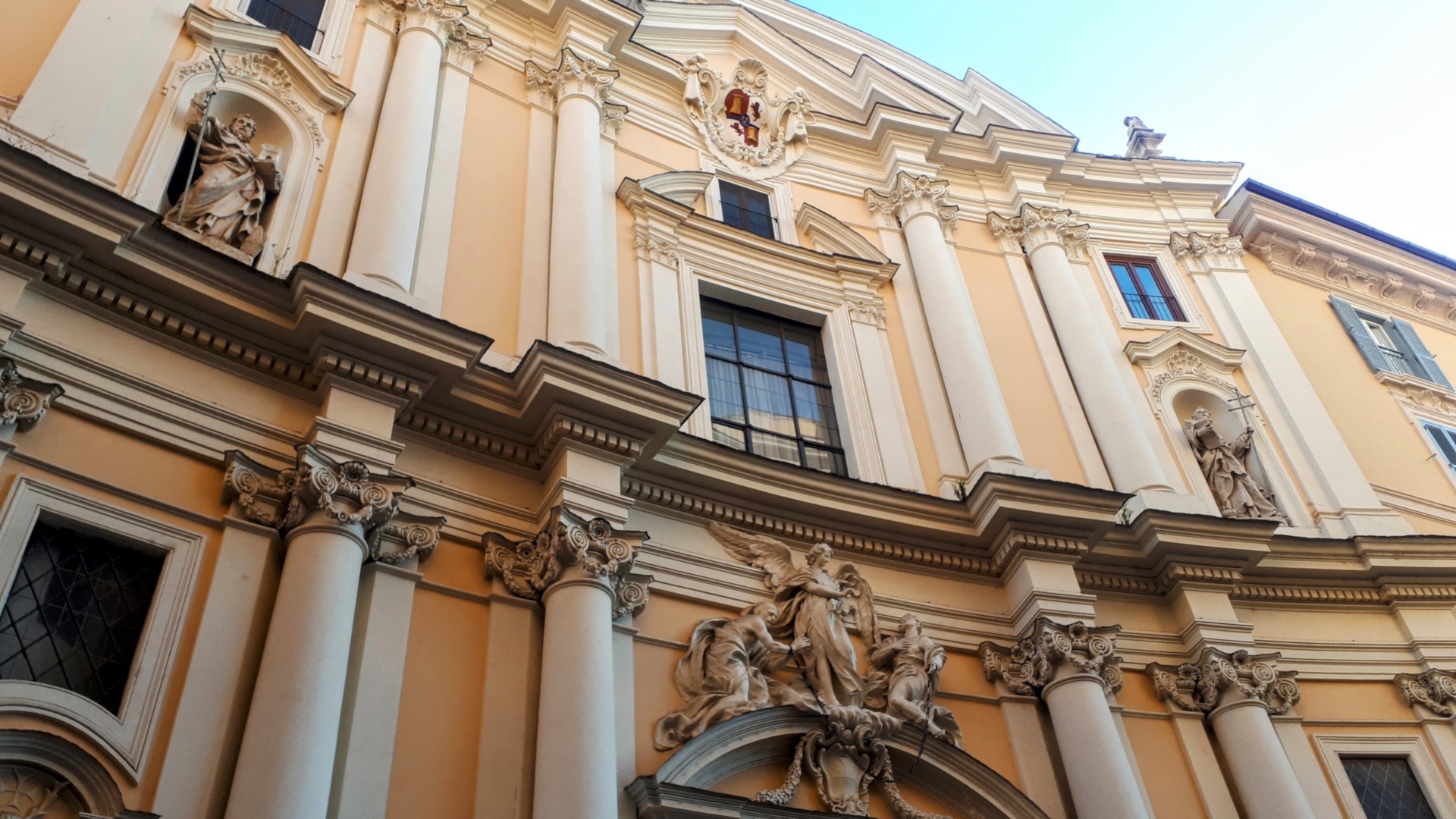
A late Baroque church in the realm of luxury, amidst stately palaces and boutiques of the fashion labels, just a few steps away from Piazza di Spagna. The church overlooks with its discreet elegance Via dei Condotti, one of the city’s most famous and exclusive shopping streets, almost at the crossroads with Via del Corso, and is linked in its name and history to the Spanish Trinitarian fathers. The Trinitarians were part of the religious family founded in the late 12th century by the Frenchman St John of Matha, who a few years later would move to Rome, to the convent of San Tommaso in Formis. Approved by Pope Innocent III in 1198, the order of the Holy Trinity had as its main purpose, along with the glory of the Trinity, the ransoming of Christian slaves in danger of denying their faith to save their lives.
Together with the adjoining convent, the church was built between 1741 and 1746 and has an overall homogeneous appearance from a stylistic point of view, since the construction and the decorative scheme as a whole were carried out within a few years without any particular subsequent interventions. The project bears the signature of the Portuguese architect Emanuele Rodriguez dos Santos, possibly assisted by Giuseppe Sardi, author of the Rococo church of Santa Maria Maddalena in Rome. At the end of the 19th century, due to the reduced number of Trinitarian fathers, the complex was ceded to the Spanish Dominicans who opened a College for the Far Eastern Missions her. The Spanish Dominicans remain in charge of the church.
The church façade has a concave structure, with two orders of columns and pilasters divided by an elaborate cornice. Its decoration recalls the church’s belonging to the Trinitarian order – the statues of John of Matha and Felix of Valois (co-founder of the Trinitarians), the stucco group by Pietro Pacilli on the pediment, showing an angel about to free a Christian and a Muslim slave joined at the wrists by an iron chain, the deer heads with the blue and red Trinitarian cross between the horns. A relief carving of the coat-of-arms of the Spanish King Philip V stands out in the center of the cornice bordering the attic.
The interior, preceded by a vestibule, has an elliptical plan with an oval vault and three chapels on each side. As in the case of the façade, the subjects of the paintings commissioned by the Trinitarian fathers repeat the iconographic themes of the order. The fresco by Gregorio Guglielmi in the central oval of the vault shows The Apotheosis of St John of Matha. The altarpiece for the high altar is by Corrado Giaquinto, one of the most acclaimed artists of his time, and depicts The Liberation of a Slave in the Presence of the Trinity. In the side chapels, two paintings depict the martyrdom of St. Agnes and of St. Catherine of Alexandria (both patrons of the order). A large number of paintings are the work of Andrea Casali. The late Baroque taste for the ephemeral emerges in the abundance of stuccoes and the triumph of faux marble of all types and colors, replacing real marble everywhere except on the floor and altars.
Information
For the timetable of the masses and visiting conditions, please consult the contacts.
 Condividi
Condividi
Location
To find out about all accessibility services, visit the Rome accessible section.











































